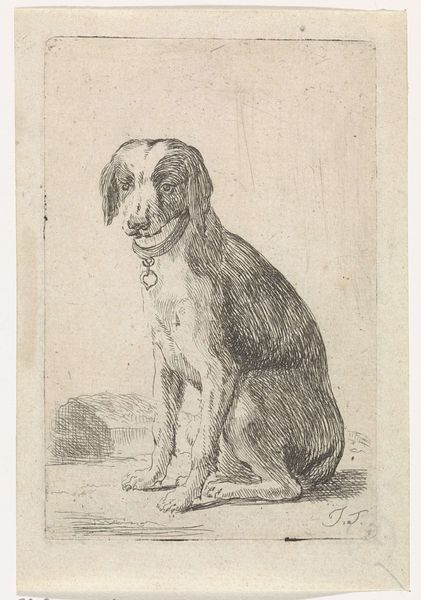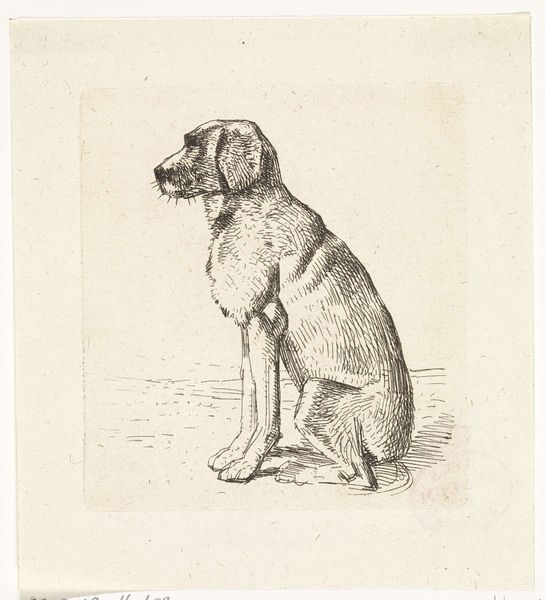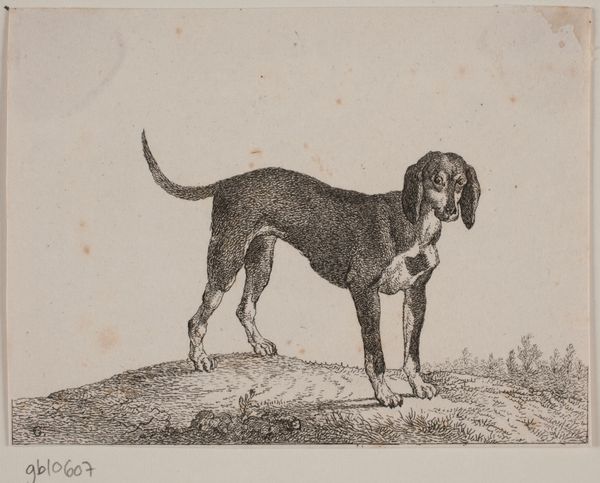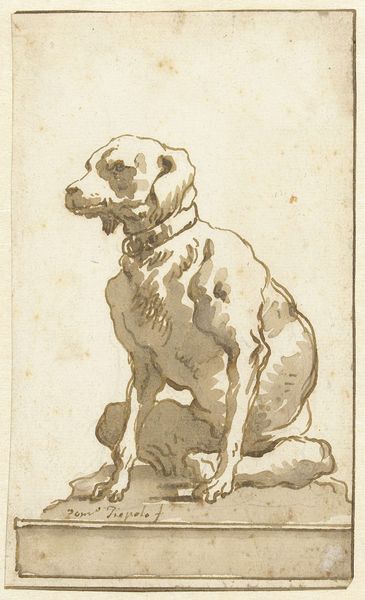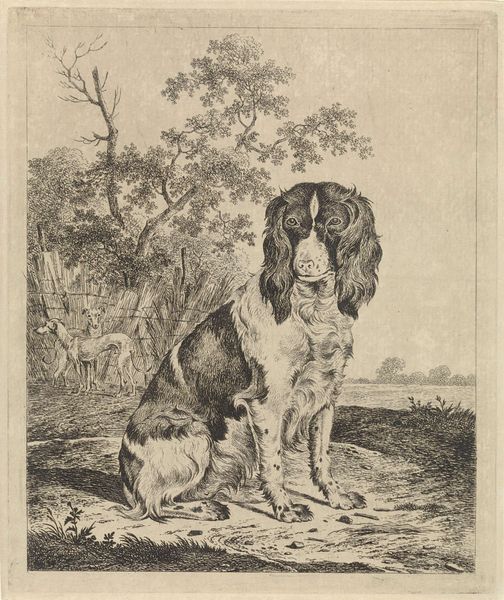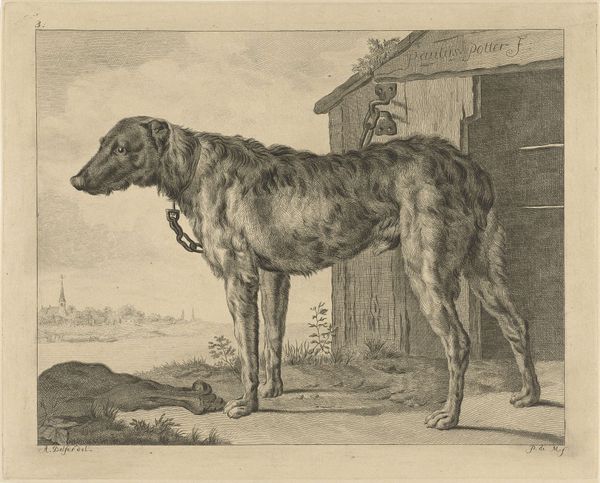
#
pencil drawn
#
toned paper
#
light pencil work
#
quirky sketch
#
pencil sketch
#
dog
#
old engraving style
#
personal sketchbook
#
sketchbook drawing
#
pencil work
#
sketchbook art
Dimensions: height 159 mm, width 124 mm
Copyright: Rijks Museum: Open Domain
This is Agostino Carracci's "Standing Dog", an engraving made in the late 16th century. The image captivates with its stark contrast and meticulously rendered textures. Observe how Carracci uses a network of fine, deliberate lines to construct the dog's form. These lines coalesce to define the animal's musculature, its fur, and even the subtle gradations of light and shadow. Notice how the compactness of the dog's body is juxtaposed with the detail in its head, especially in the eyes which brings a sense of focused attention. Carracci's technique creates a palpable sense of volume and presence. The cross-hatching is not merely descriptive; it actively models the form, giving it a three-dimensionality that belies the flatness of the print. The image operates almost as a study in contrasts between the smoothness of the head and the rough texture of the body. The underlying philosophical premise of the artwork is perhaps best understood through semiotics - each line, shadow, and contour functions as a sign, contributing to a comprehensive portrait. This artwork challenges fixed meanings, prompting viewers to continually reinterpret the relationship between representation and reality.
Comments
No comments
Be the first to comment and join the conversation on the ultimate creative platform.
